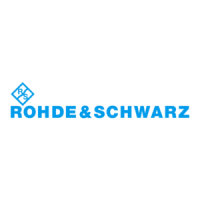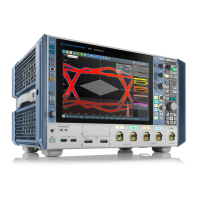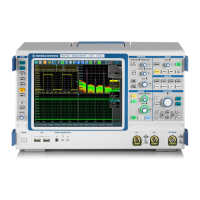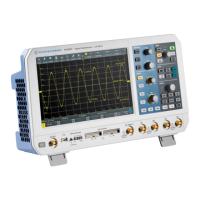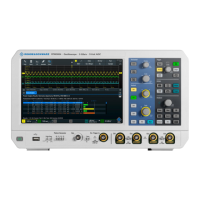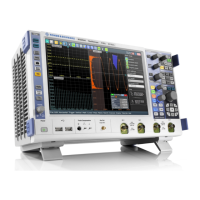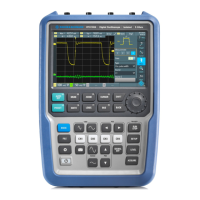Remote control commands
R&S
®
RTE
1076User Manual 1326.1032.02 ─ 20
18.4.6 Bit pattern parameter
Bit pattern parameter are required with commands triggering on address, identifier, or
data pattern.
To set the pattern value, you can use either a numeric parameter as defined in the
SCPI standard, or a string parameter.
Bit pattern in numeric parameter
In a numeric parameter, the values are listed byte-by-byte, with bytes separated by
commas and MSB first. The default numeral format is decimal, other formats can be
indicated by a format identifier (#B = binary, #H = hexadecimal, #Q = octal). Currently,
no format for signed values is available.
Example: Parameter with three bytes, decimal byte values are 10, 20, 30. The exam-
ples are given for CAN, the bit pattern in other commands is defined in the same way.
●
TRIGger:CAN:DMIN 10,20,30
●
TRIGger:CAN:DMIN #B00001010,#B00010100,#B00011110
●
TRIGger:CAN:DMIN #H0A,#H14,#H1E
●
TRIGger:CAN:DMIN #Q012,#Q024,#Q036
Bit pattern in string parameter
In a string, the complete binary pattern is written without separation of bytes, for exam-
ple:
TRIGger:CAN:DMIN '000010100001010000011110'
Unlike a numeric parameter, the string parameter accepts wildcards for single bits (X =
don't care). Whether wildcards can be used or not depends on the remote command.
Usually, address and identifier parameter require unique patterns while data parame-
ters may contain wildcards.
Mostly the length of the bit pattern is defined, for example, by the I²C address type, the
CAN identifier type, or the data length code. In theses cases, it is recommended that
you enter the complete bit pattern. If you enter a shorter pattern, the instrument fills up
the pattern with X bits to the right of the defined pattern.
Example: You want to trigger on an 11 bit CAN address and enter the bit pattern
'11100011' (8 bits only). The instrument uses the pattern '11100011XXX' for triggering.
Query for a pattern
The pattern format for the return value of a pattern is defined by the FORMat:
BPATtern command.
18.5 Common commands
Common commands are described in the IEEE 488.2 (IEC 625-2) standard. These
commands have the same effect and are employed in the same way on different devi-
Common commands
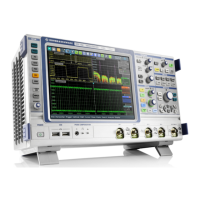
